“If fiction has given more to us than fact, then this is the greatest truth.” Ryoichi/Patrick Nagatani
There’s no such thing as truth.
That’s what they teach you in college or grad school, anyway.
Ever beholden to the French Philosophical titans Michel Foucault and Jacques Derrida, endless professors teach countless students that each piece of information is inextricable from the power dynamics that created and disseminated it.
It is the ultimate example of occupying the intellectual high ground, because the idea can’t be attacked.
If you try to undermine the principles, your counter-argument can be dismantled more easily than an Ikea Lack table. (Unscrew the four legs and you’re done.)
No matter what you say to critique the core essence of Post-Modern theory, your words will be deflected by attacking the vessel that hosts them: you.
Only a person from a very specific cohort, gender, or culture can critique that group, so if you’re not one-of-us, your words are too much a construction of your gender/status/culture for your opponent to give them credence.
(Each word must be parsed for its deeper social construct, like Bill Clinton musing about the definition of the word “is.”)
Unlike a few weeks ago, I’m not actually writing about the powers that be today, nor the intersection of varying levels of privilege.
Nor even will I attack Donald J. Trump. (Well, maybe just a little… for a laugh.)
Rather, I want to poke at some dead French guys, and the manner in which their very important ideas have come to undermine the collective fabric of society. (Since they’re dead, and French, we can mock them all we want. C’est vrai?)
There was something truly revolutionary in Post-Modernism, as it opened the door for various perspectives to be assimilated into the mainstream. (Going back to two weeks ago, Po-Mo was the operating system that allowed for minority voices to be taken seriously.)
By the time I got to grad school in the early aughts, though, I found the ideas a little restricting, with respect to helping us understand the burgeoning digital reality of the 21st Century. How would a philosophy that split the 80’s from the 60’s help us understand a world that was built on binary code?
Now it’s 2018, and we have a definitive answer.
Taken to an extreme, Derrida has given us Orwell, in the form of the President of the United States.
Like him or hate him, most people would be hard pressed to deny that Trump has a problem with the “truth.” He believes the larger narrative, the story he tells himself and his followers, is more important than what’s “true,” because there’s no such thing as true anyway.
I was concerned these radical leftist ideas would be co-opted by the right at some point, and that point is now. Unfortunately, given the stratification of media and information sources, these days there is essentially no way to provide new ideas to people that might challenge their entrenched worldview.
Even speaking for myself, I wonder whether I would be able to give Trump credit if he verifiably saved a young toddler from drowning in a Mar-a-Lago pool?
Can you imagine?
SCENE
A young child, drunk on too much ice cream, is stumbling around the edge of the resort pool. His parents, their backs turned, (they assumed the Burmese nanny was watching him,) are busy drinking gin and tonics, chatting with their neighbors about whether they should invite Brett Kavanaugh to dinner now, or wait until spring when it will seem less trendy.
All of a sudden, little Tad slips on the edge of the pool, and while he’s worrying about dropping his ice cream cone, he loses his balance and falls directly into the deep end.
(Unfortunately, he can’t swim.)
Thankfully, the President of the United States in is residence that day, and happens to be eating a triple-guacamole-bacon-cheeseburger, two tables away.
One might imagine the Secret Service would save poor Tad, but their job is to protect the President. So it’s up to DJT to jump into the pool, still wearing his Gandolfini-esque-POTUS-track-suit, and fish little Tad to safety.
END SCENE
Let’s say that happened.
For real.
How many Democrats in this country would come out and publicly say, “Great job, Mr. President. I really appreciate that you saved that pipsqueak from drowning!”
Would you?
I know this seems like a convoluted thought experiment, a stoner’s version of Schrodinger’s Cat, but bear with me here. In an era of fake news, where any sense of objectivity has been obliterated, what does the word “fact” even mean?
Or “real?”
True story: my 11-year-old told me the other day that he was more interested in the “virtual” LeBron James in his NBA 2K19 video game than he was in watching the “actual” LeBron James play an exhibition game against the Denver Nuggets. (Of course, the “actual” LeBron would appear on the same “digital” TV screen either way.)
To him, in that moment, the “fake” was more intriguing and compelling than the “real.”
I’m thinking about this today, if I’m being honest, having just put down “Buried Cars: Excavations from Stonehenge to the Grand Canyon,” by Patrick Nagatani. (Published by the Museum of New Mexico Press.)
I reviewed one of Patrick’s books last year, as he was my professor at UNM many years ago, and he passed away in the autumn of 2017 after a long bout with cancer.
He probably didn’t need to see 2018, though, as he had a pretty good handle on “truthiness” back when I studied with him in the late 90’s.
This book represents one of his stranger projects, and I recall him describing it to me before I’d read any of the French canon. (I was confused, but excited.)
The book presents this story as straight, all the way until the end, when they release the “truth.”
According to “Buried Cars,” Patrick collaborated with a mysterious Japanese archaeologist named Ryoichi, who had discovered some scientific evidence that would turn world history on its head.
Apparently, a series of sacred sites around the world included contemporary luxury cars that had been buried in previous centuries. The book features diary entries, and carbon dating information that proves that the cars, (like a Ferrari Testarossa,) were embedded in the Earth hundreds of years before they were actually built.
It is suggested that alien beings might have played a role in the car-burials, but whether they did or didn’t, worm holes were definitely to blame.
Wormholes that connected parallel universes in the multi-verse.
Now, if you’ve been reading for the last 7 years, you know I’m a sucker for parallel universe stories. (Though watching “The Flash” with my kids may have cured me of the predilection. Multi-verse stories get confusing VERY quickly.)
Patrick Nagatani conceived and created this project in the late 90’s, but had gone to graduate school at UCLA in late 70’s. These Po-Mo ideas would have been as familiar to him as his favorite dish at the Fronteir Restaurant across the street from the UNM campus.
When I first heard about this, like I said, I had a lot of questions.
What do you mean you have a fake-alter-ego?
What do you mean you made up a bunch of scientific data?
What do you mean you built models and pretended they were real?
You can just…do that?
These days, it seems quaint to think that photography tells the “truth” or provides “evidence.”
But in 1998, in just my second year as an art student, it was revolutionary.
Art is what you want it to be.
If you call it art, it’s art.
It’s not hard to see how that line of thinking connects directly to the underpinnings of contemporary, digitally-enhanced Global society.
Jamal Khashoggi left the Saudi embassy of his own recognizance. The water in Flint is safe to drink. The Arctic icecaps are not melting.
(You get the point.)
That this is a photo book, and one that was tied to a major exhibition at the Albuquerque Museum, seems almost secondary. The pictures of models painstakingly created are cool for sure, but they don’t have the same power they likely had when they were made. (Like Jerry Uelsmann’s stuff.)
Digital fakery is so easy these days that the “fools-the-eye” analog photography here doesn’t seem “real.” It’s more “cute,” and one can see how such work might have inspired contemporary model-makers like Lori Nix.
The “truth” is, I always found this work a tad kitschy, and much preferred “Nuclear Enchantment,” which I reviewed here glowingly last year. (I also preferred his meditative, contemplative, slightly-batshit, masking-tape-Buddhas.)
But I’m very glad this book was released this year, and the project lauded on the walls of New Mexico museums, because it could not be more timely.
As artists, we hope to make sense of the time and culture in which we live. We process those ideas into art for our own reasons, (often because of our need to make things,) but “Buried Cars” is proof that those musings might just be used by future humans to figure out what the fuck happened back then.
(Meaning now.)
Bottom Line: Trippy, intricate, false narrative about the multi-verse
To Purchase “Buried Cars” click here
If you’d like to submit a book for potential review, please email me at jonathanblaustein@gmail.com. We currently have a several month backlog, and are particularly interested in submissions from female photographers so we may maintain a balanced program.



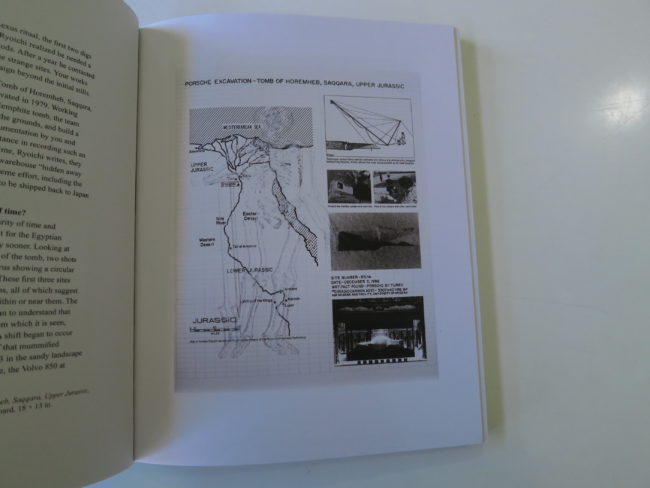
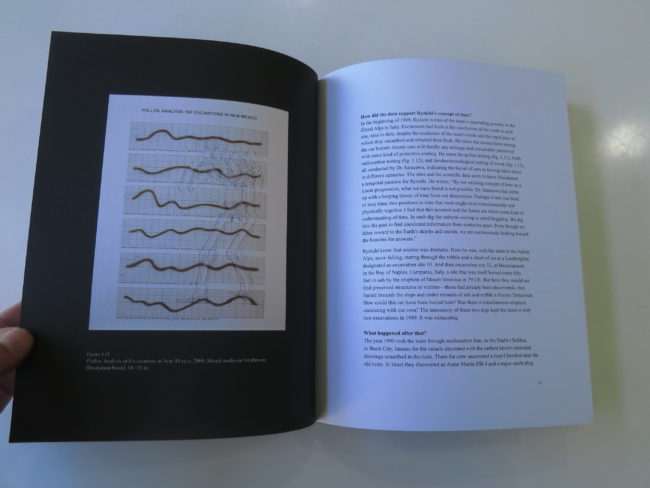
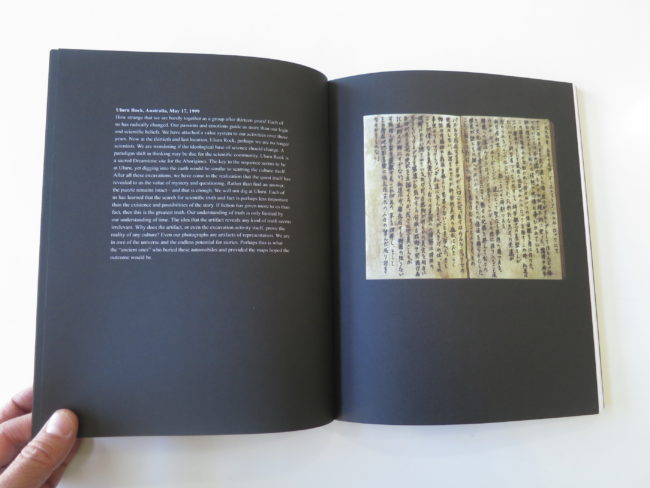
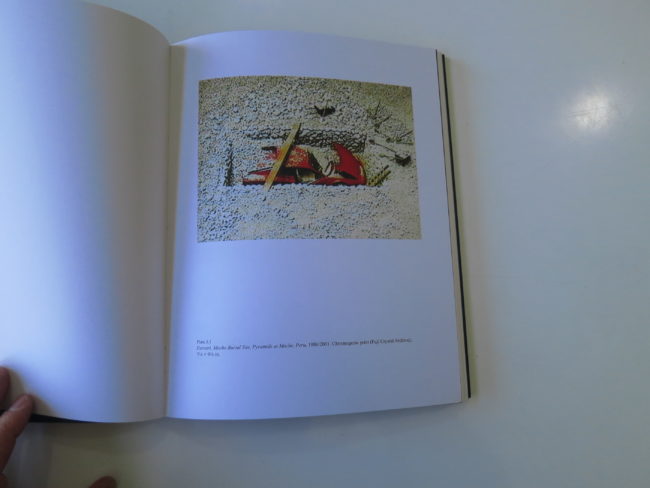
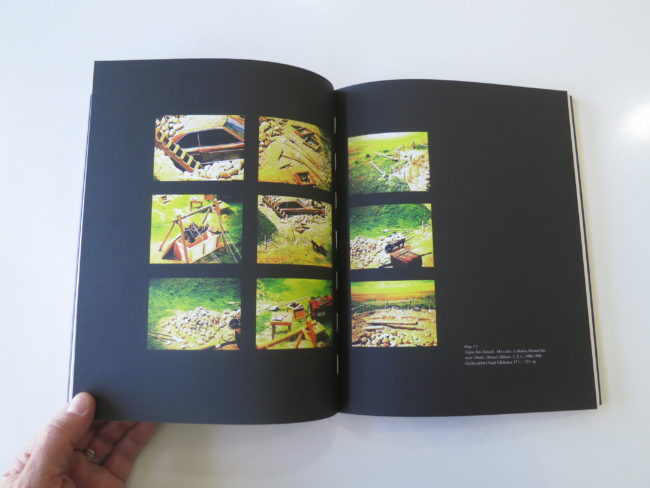
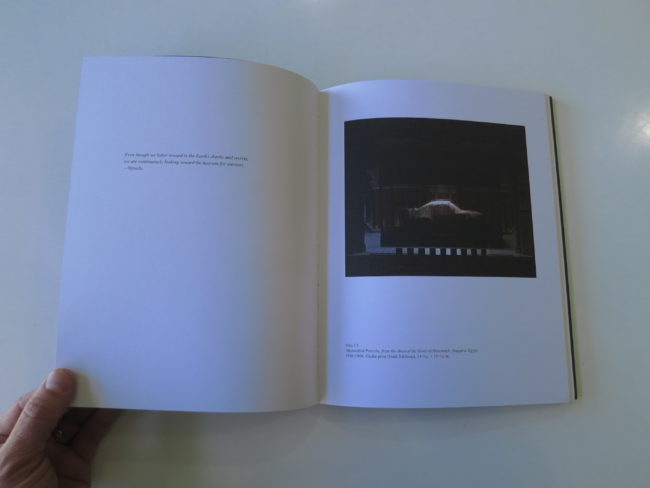

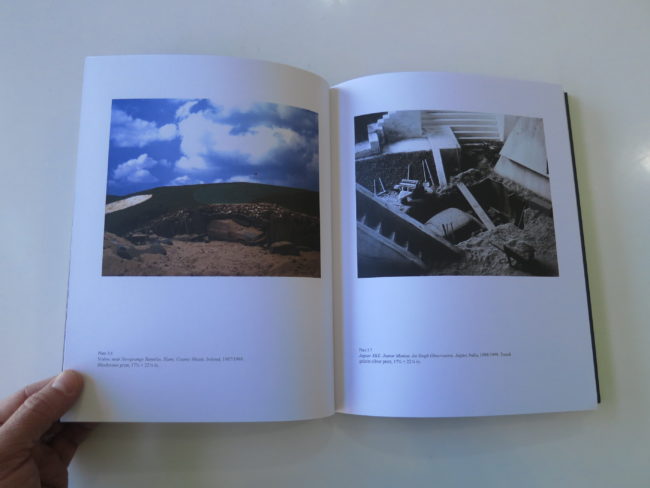
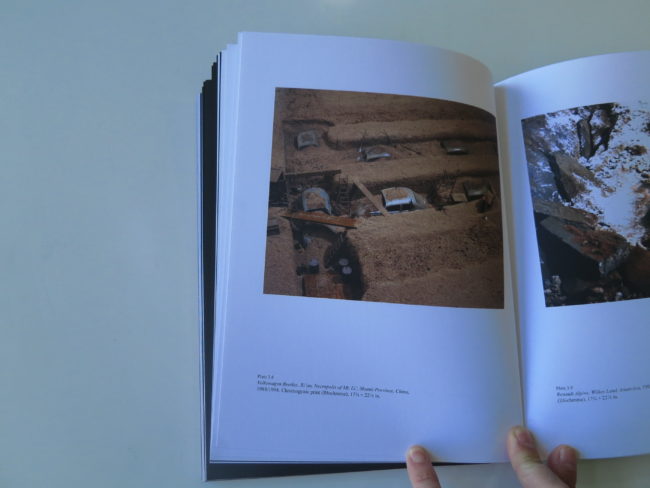






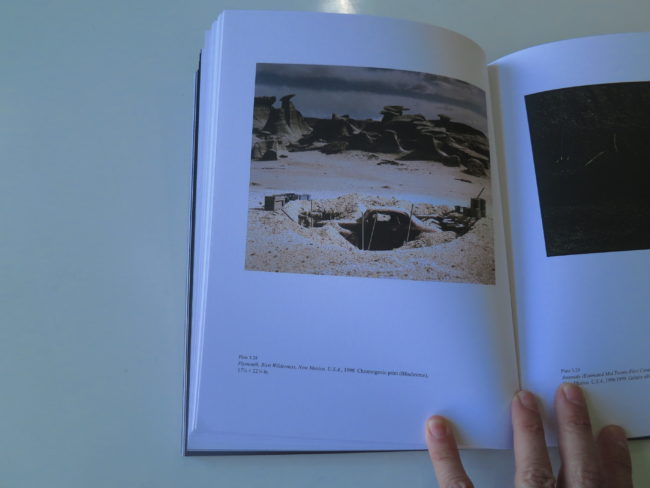

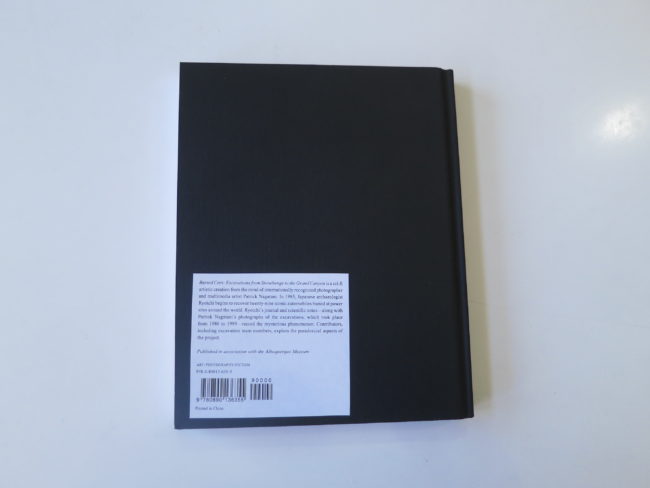
2 Comments
I remember showing Julia Dean a folio of manipulated images of Ocean Front Walk Venice Street life taken with one of the first digital cameras in 2004. As a renowned photo journalist and educator, she was aghast at my manipulating reality. Until I reminded her that I was a fine art photographer, not a photojournalist. She considered it for a moment and then lit up and said go for it as the manipulated images were far more interesting visually to her after years of teaching editorial style to students covering the same topic. I was always clear to not believe anything as “real” coming from my studio, and have no investment in reality as it probably never existed and now with digital, definitely doesn’t. Just hate the concept when the most trusted position in the United States runs the country on the same principle. Ps love a photo book review with photos of the pages rather than just the images. Perfect
Hi Jonathan Blaustein,
You had written a very amazing article in very simple words, which is very easy to understand for all….
Thank you so much for this…
Comments are closed for this article!